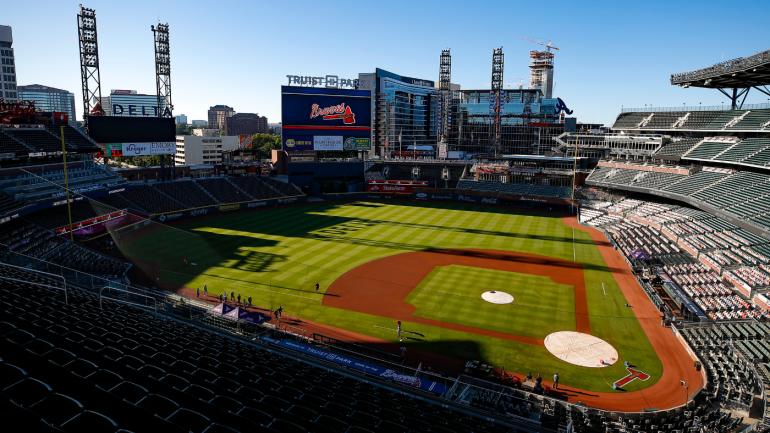
Here's how sports economists Roger Noll and Andrew Zimbalist summarized the findings of their seminal 1997 essay on the burgeoning trend of the publicly funded stadium or arena:
"The effect of stadiums on the cash flow of teams and cities suggest that new facilities rarely, if ever, are worthwhile. Sometimes they can be financially catastrophic.
Subsidized sports facilities do not exist because they are financially valuable assets in their own right. They exist, instead, because most cities have decided that a subsidized team is better than no team at all, and because scarcity in the number of teams gives owners the advantage in bargaining with cities."
While back yonder in '97 is positively antediluvian when it comes to sports content, Noll's and Zimbalist's observations on the folly of committing tax dollars to private-use sports facilities remains acutely true. Providing the latest object lesson on this front is the home of the Atlanta Braves, Truist Park (né SunTrust Park).
We know this because economist J.C. Bradbury of Kennesaw State University recently published a paper on the economic impact of Truist Park, which opened prior to the 2017 season under its former name. Here, broadly, is where the data led him:
"The findings indicate a net increase in taxable sales in the county; however, the magnitude is small and not statistically significant. Though an influx of net new spending is evident, approximately one-third of the project's sales derive from crowding out other local economic activity. In total, added tax collections fall well short of covering the public subsidies that fund the stadium."
This squares with what we know about publicly subsidized sports facilities. All it does is reallocate consumer spending as opposed to creating new investment and provide some seasonal, low-wage jobs. Given the cost of these monstrosities and the ludicrously friendly leases that their team-tenants sign, it's not even close to a worthwhile investment. In the case of the Braves, they abandoned Atlanta and 20-year-old Turner Field for suburban Cobb County in large measure because the county agreed to commit hundreds of millions of tax dollars to the project. That tally is more than $350 million (and probably growing), which means Cobb taxpayers will never come close to getting that back.
Such corporate welfare entails an obvious opportunity cost, and it often entails a giveaway of valuable land that could be devoted to far better uses (especially when cities and counties clear room, often via eminent domain, for massive "mallparks" as opposed to the old urban model in which ballparks were wedged into existing spaces). The usual vested interests -- i.e., team owners, league apparatchiks, and the local leaders who tap dance for their pleasure -- will distort the obvious truths and tell you why this project is different from the all other boondoggles of identical ilk. Don't ever listen to them.
But what about when they cite the miracles of Camden Yards in Baltimore? The set of circumstances isn't easily replicable, but the more important point is that the "economic engine" effect of Camden has been grossly overstated. Again, Noll and Zimablist in 1997:
"Sports facilities attract neither tourists nor new industry. Probably the most successful export facility is Oriole Park, where about a third of the crowd at every game comes from outside the Baltimore area. (Baltimore's baseball exports are enhanced because it is 40 miles from the nation's capital, which has no major league baseball team.) Even so, the net gain to Baltimore's economy in terms of new jobs and incremental tax revenues is only about $3 million a year--not much of a return on a $200 million investment."
As a matter of principle, those on the political left should be opposed to lavishing private businesses with public subsidies, while conservatives should be opposed to the tax increases that enable these sorts of projects. Yet they still keep happening. I'll repeat my call for local leaders to pressure each other to sign a pledge of some sort that declares if pro sports teams want their own place of business, then they should pay for it themselves. Without the ability to play cities against each other, teams would be forced to do just that. However, that kind of "responsible collusion" will almost certainly never come to pass.
Instead, counties and municipalities will continue getting burned, which is not surprisingly turning out to be the case with Cobb County, the self-defeating home of the Braves.






















